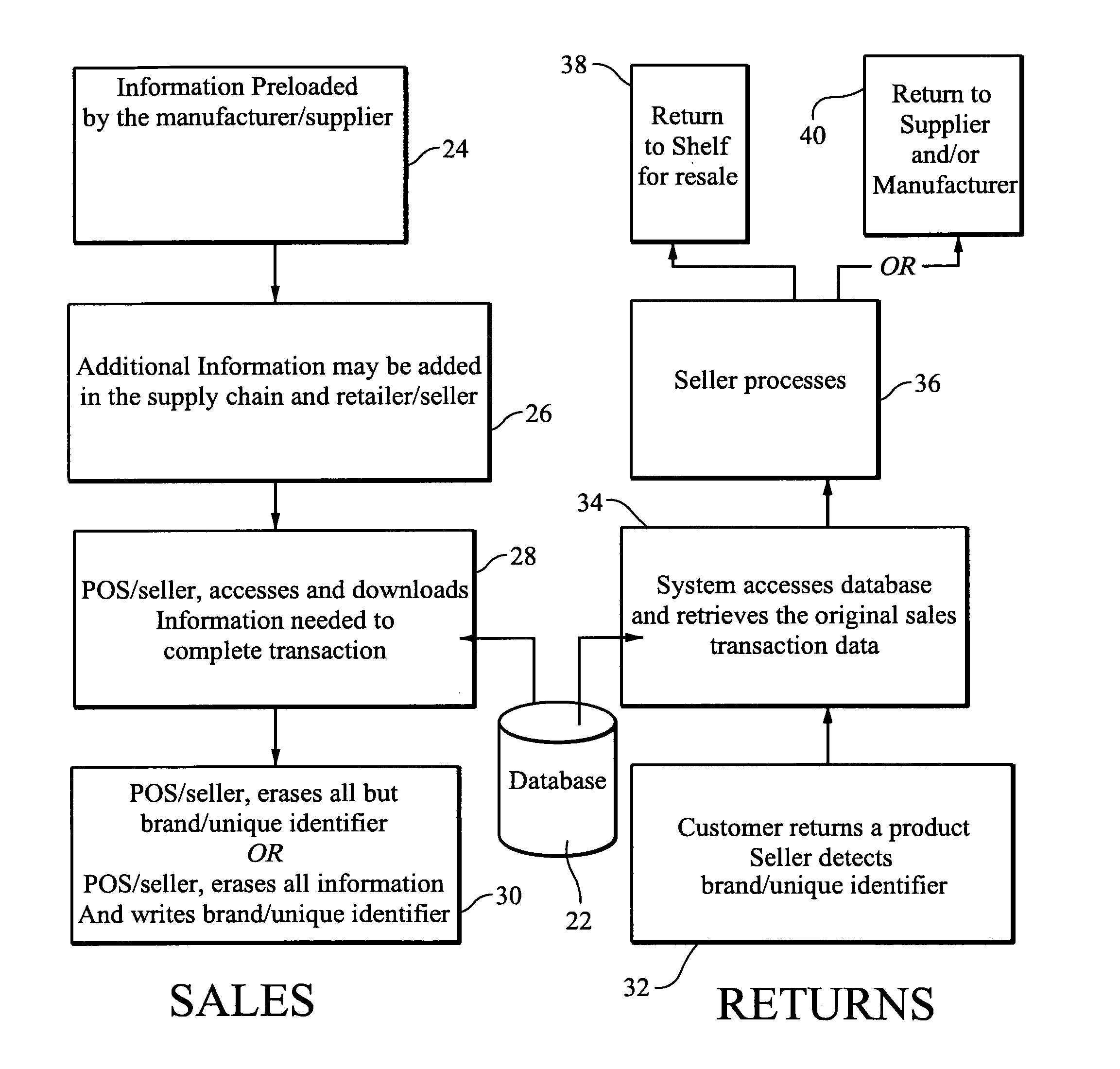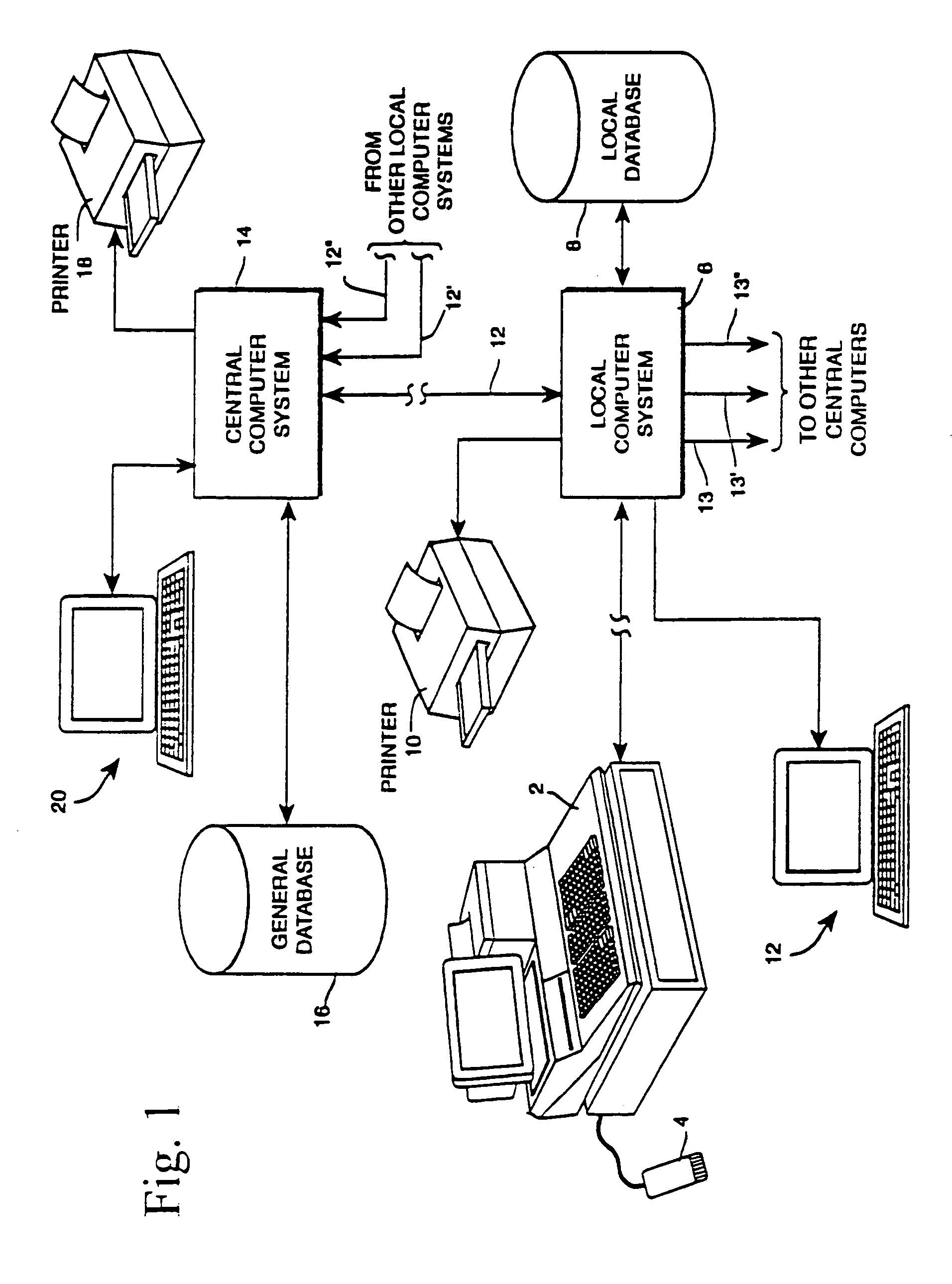RF-ID product tracking system with privacy enhancement
a product tracking and privacy enhancement technology, applied in the field of retail sales and electronic registration of sales transactions, can solve the problems of not being able to raise privacy and/or security concerns for consumers, raise privacy and/or security concerns for anyone with an rf reader, and raise a host of possible privacy and security issues, so as to reduce privacy concerns for purchasers
- Summary
- Abstract
- Description
- Claims
- Application Information
AI Technical Summary
Benefits of technology
Problems solved by technology
Method used
Image
Examples
Embodiment Construction
[0013]The preferred embodiment of the instant invention will now be described in connection with the appended drawings. The described embodiment is not meant to limit the invention to the specific details described herein.
[0014]As explained above, FIG. 1 shows an exemplary electronic registration (ER) system of the type described in the ER patents identified above. In such ER systems, products are registered at the point of sale using a unique identifier, such as a serial number, that uniquely identifies the product involved in a sales transaction. By storing the unique identifier along with a date associated with the transaction, as well as return policy information, ER enables prompt, efficient and accurate return transactions to be performed in connection with product returns using the ER system. In the past, the unique identifiers have been provided in the form of bar codes or the like on the products and / or product packaging. The instant invention provides a method of allowing ...
PUM
 Login to View More
Login to View More Abstract
Description
Claims
Application Information
 Login to View More
Login to View More - R&D
- Intellectual Property
- Life Sciences
- Materials
- Tech Scout
- Unparalleled Data Quality
- Higher Quality Content
- 60% Fewer Hallucinations
Browse by: Latest US Patents, China's latest patents, Technical Efficacy Thesaurus, Application Domain, Technology Topic, Popular Technical Reports.
© 2025 PatSnap. All rights reserved.Legal|Privacy policy|Modern Slavery Act Transparency Statement|Sitemap|About US| Contact US: help@patsnap.com



